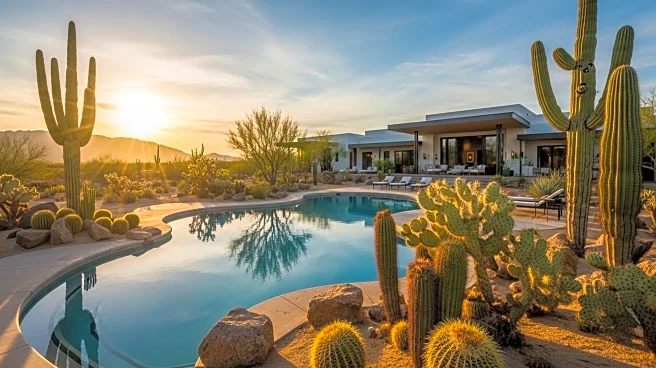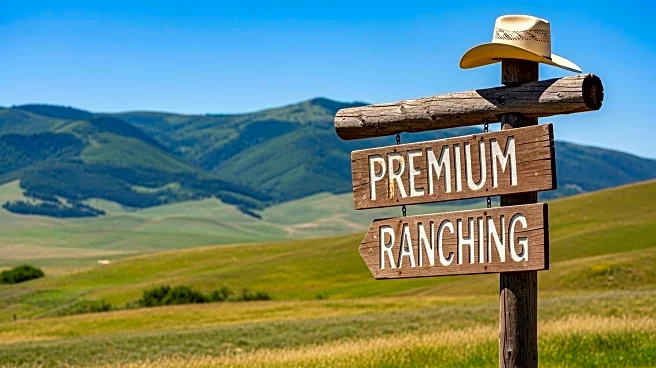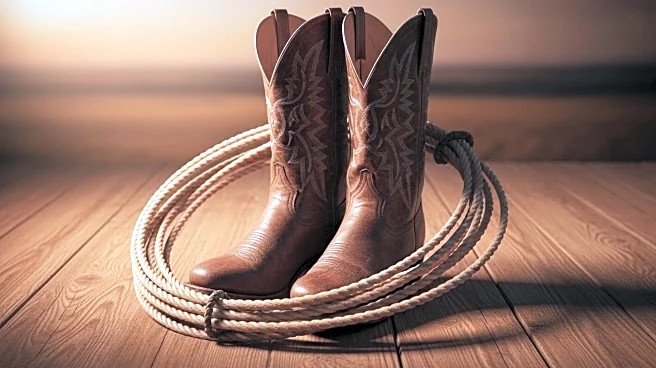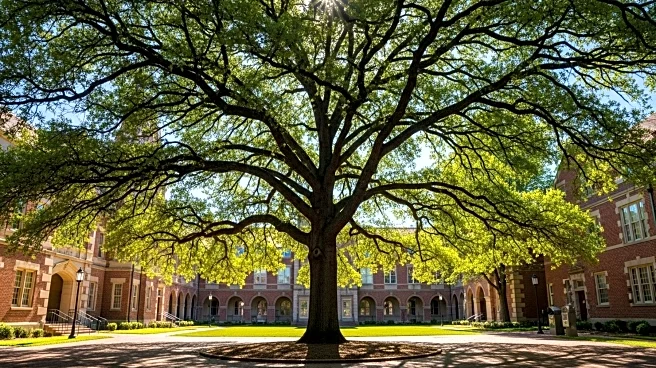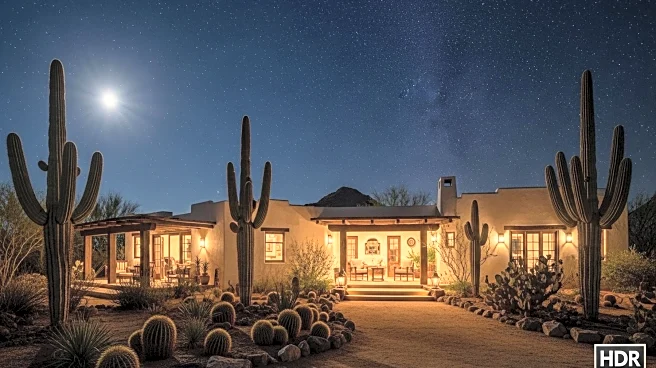What is the story about?
What's Happening?
Texas currently has the highest number of ranches for sale in the United States, with 7,411 properties listed as of early September, according to Realtor.com. This figure significantly surpasses Kentucky, the second-ranked state, which has 1,641 ranches on the market. The average size of a Texas ranch is 511 acres, translating to nearly 3.8 million acres of ranchland available for purchase. The surge in ranch sales is partly attributed to the 'Yellowstone effect,' where the popularity of TV shows like Yellowstone has increased interest in ranch properties. High-end buyers are particularly drawn to these expansive lands, seeking privacy and space, a trend that has been amplified by the pandemic. Notable ranches currently on the market include the 777-acre Pace Bend Ranch near Austin, listed at $100 million, and the 3,630-acre Mt. Solitude Ranch near San Antonio, priced at $79.9 million.
Why It's Important?
The increase in ranch sales in Texas reflects broader trends in real estate and lifestyle preferences. The demand for large, private properties indicates a shift towards rural living and investment in land, driven by both cultural influences and practical considerations such as space and privacy. This trend could impact local economies, as the sale of these properties often involves significant financial transactions and potential development opportunities. Additionally, the interest in ranches may influence land use policies and conservation efforts, as buyers consider the ecological and recreational value of these lands. The economic implications are substantial, with potential benefits for real estate markets and related industries, including construction and agriculture.
What's Next?
As the market for ranches continues to grow, stakeholders such as real estate agents, developers, and conservationists may need to address the balance between development and preservation. The ongoing interest in ranch properties could lead to increased investment in infrastructure and amenities, enhancing the appeal of rural areas. Additionally, policymakers might consider regulations to manage land use and protect natural resources, ensuring sustainable development. The trend may also prompt further cultural productions that romanticize ranch life, potentially fueling continued interest and investment in these properties.
Beyond the Headlines
The cultural impact of the 'Yellowstone effect' highlights the power of media in shaping real estate trends and lifestyle choices. This phenomenon underscores the intersection of entertainment and economic behavior, where fictional narratives influence real-world decisions. The sale of ranches also raises questions about land ownership and stewardship, as new buyers may bring different values and priorities to these historically significant properties. The long-term implications could include shifts in community dynamics and land management practices, as new owners integrate into local cultures and economies.
AI Generated Content
Do you find this article useful?




